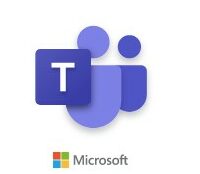 [German]The migration of Microsoft Teams client users to the new version 2.0 is proceeding very slowly. Although this new client has already been available for several months and Teams 2.0 will soon be mandatory, around 2/3 of Teams users have so far refused to migrate. Microsoft is calling on companies to force the switch to the new Teams 2.0 client.
[German]The migration of Microsoft Teams client users to the new version 2.0 is proceeding very slowly. Although this new client has already been available for several months and Teams 2.0 will soon be mandatory, around 2/3 of Teams users have so far refused to migrate. Microsoft is calling on companies to force the switch to the new Teams 2.0 client.
The new Microsoft Teams 2.0 client
Almost a year ago, Microsoft announced, that it was working on a new Teams 2.0 client. The background to this was probably massive user complaints about the resource consumption of the old Teams client. The aim of the new development was to enable faster, simpler and more flexible working with the new client. The app was also supposed to start 2 X faster than the old client and only require 50% of the memory.
The new Microsoft Teams 2.0 client has been available to users on Windows and macOS since October 2023 (see New Microsoft Teams 2.0 Client released for macOS and Windows). And users can get their own impression of the promised functionality. In the blog posts linked at the end of this article, you can read about the chain of failures, bad luck and mishaps: From translation errors to an incorrectly displayed user status to unusable default backgrounds, it's all there.
Microsoft says: from April 1, 2024 (not an April Fool's joke), the Microsoft Teams 2.0 client will be mandatory (see New Microsoft Teams 2.0 client mandatory from April 1, 2024). Microsoft has also revealed that updates for Teams will be mandatory in the future. From April 2024, Teams clients that are older than 3 months will simply no longer work (see Microsoft Teams: Clients older than 3 months will no longer work from April 2024).
Slow transition to Teams 2.0
German blogger Martin Geuß has taken a closer look at the Teams 2.0 figures in this German article on Dr. Windows. According to the article, Microsoft is complaining in a post within the Microsoft 365 Admin Center about the slow migration of corporate users to the Teams 2.0 client.
According to the Microsoft 365 Admincenter, only 90 million users are using the Teams 2.0 client, while Martin puts the number of Teams users at 320 million for October 2023. This means that not even 1/3 of the Teams user base has switched to the new client version 2.0. Many users are likely to have blocked the switch to the new Microsoft Teams 2.0 client via group policies. Microsoft published some information in this Techcommunity article in October 2023.
According to Martin Geuß, Microsoft calls on its customers to accelerate the switch to the new Teams 2.0 client in a message in the Microsoft 365 Admin Center. Customers are reminded of the deadline of April 1, 2024, when Teams 2.0 will become mandatory. Administrators should not allow themselves to be overwhelmed by the forced migration to Teams 2.0 on April 1, 2024.
According to the entry in the Microsoft 365 Admin Center, a notification banner will be displayed in the old client from February 2023, prompting users to switch to the new version 2.0. From March 31, 2024, Microsoft will then block a return to the old Teams 1.6 client, so that Microsoft Teams 2.0 must be used from April 1, 2024.
So it will be interesting to see when administrators will allow their users in corporate environments to switch to the Microsoft Teams 2.0 client. In any case, no one seems to be heading in this direction with rush – or what does it look like in your company environments?
Similar articles
New Microsoft Teams 2.0 Client released for macOS and Windows
Microsoft Teams 2.0: Übersetzungsfehler "Ganztägig kostenlos" im Client als TM687047 bestätigt
New Microsoft Teams 2.0 client mandatory from April 1, 2024
Microsoft Teams: Clients older than 3 months will no longer work from April 2024
Microsoft Teams 2: User status is sporadically displayed incorrectly
Microsoft Teams 2.0: Standard backgrounds not usable?
Microsoft Teams 2.0 issues: Outlook add-in missing during installation; crash after installation and more




Certainly got it blocked in our environment. I hate these forced Microsoft migrations. The current client works well for what we need in the corporate environment, making wholesale changes is always a pain.
It's bad enough that the upcoming new Outlook is being forced soon, which will break integrations with legacy systems (COM add-ins) we have been using for a decade. We can't migrate off these systems in time for the Outlook change, so our users will be without that function for a few months until we are able to migrate the legacy system to the cloud.